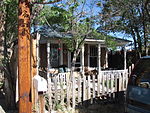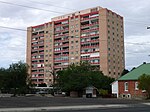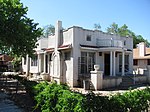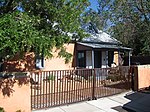Downtown Neighborhood, Albuquerque
Neighborhoods in Albuquerque, New Mexico

The Downtown Neighborhood is a neighborhood in Albuquerque, New Mexico, located between Downtown and Old Town. It is sometimes known as the Fourth Ward based on Albuquerque's former system of political wards. The neighborhood is a mostly residential area consisting largely of single-family dwellings in various sizes and styles constructed between the 1880s and 1940s. There is also a commercial district along Central Avenue which has been branded since 2017 as West Downtown.
Excerpt from the Wikipedia article Downtown Neighborhood, Albuquerque (License: CC BY-SA 3.0, Authors, Images).Downtown Neighborhood, Albuquerque
Roma Avenue Northwest, Albuquerque Downtown Albuquerque
Geographical coordinates (GPS) Address Nearby Places Show on map
Geographical coordinates (GPS)
| Latitude | Longitude |
|---|---|
| N 35.09 ° | E -106.66 ° |
Address
Roma Avenue Northwest 1192
87102 Albuquerque, Downtown Albuquerque
New Mexico, United States
Open on Google Maps









